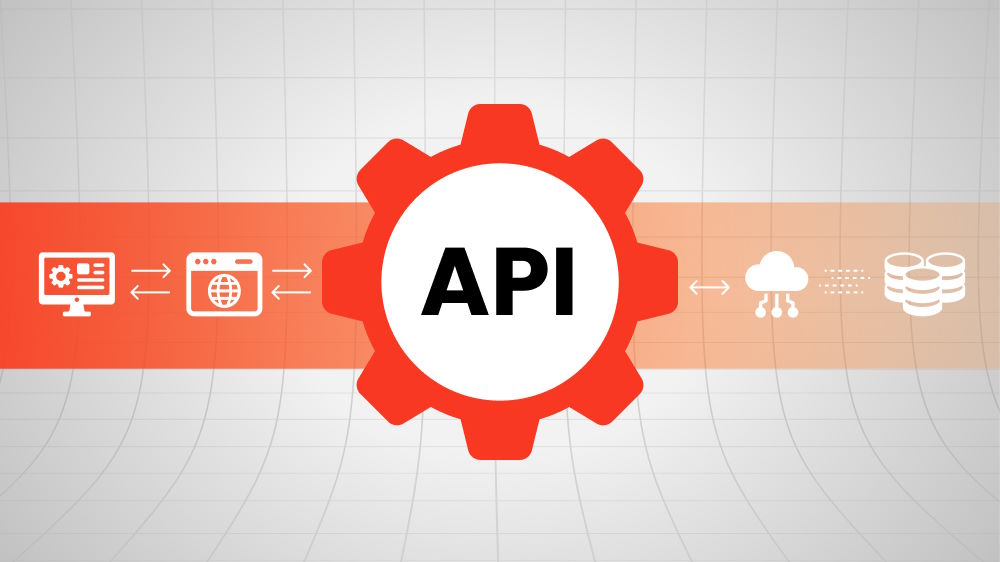5 Driving Factors that Influence a Startup Development Team Structure

Content Map
More chaptersTechnology is gradually growing to a state that you can hardly imagine. Regardless of industry, there are technology giants and startup teams expanding their power to their fullest potential with breakthrough software products. A well-formed, dedicated software development team is now a prerequisite for every project success.
As fundamental to product success, software developers are involved in every stage of the product lifecycle, from the discovery phase to the launch and maintenance one for further expansion. However, have you properly defined the structure of your development team? While this seems like a straightforward task with experienced large organizations, startups often struggle with it. A startup project will turn into a success or not; it all depends on the way you optimize your team.
If you are a new player seeking to enter this competitive market, let’s kickstart your journey by forming a startup development team. Start small with our informative article below, where we are eager to offer guidance and support.
Why Should You Keep Your Startup Development Team Minimal?

Most people think of Minimum Viable Product (MVP) when it comes to minimalism in the development process. However, recently, a new concept has emerged quite popular called Minimum Viable Team (MVT). While MVP is the approach that focuses on developing a particular product with only necessary feature sets, MVT emphasizes building a team structure as small as possible to achieve the startup’s goals.
For startups aiming to reduce operating expenses, it may be more practical to form a small development team rather than a large one with unnecessary positions during the initial stages. Keeping your software development teams minimal but effective brings various benefits to businesses.
- Cost-effective: Startups typically operate with limited resources and funding. This is one of the biggest reasons why it is difficult for them to access many high-quality human resources simultaneously. By keeping the time size small, businesses save a lot of expenses related to salaries, infrastructure, etc., and allocate them to core competencies effectively.
- Better communication: The fact is, a smaller team always leads to better communication. With only needed positions, businesses communicate important information quickly and efficiently between individuals and departments in the organization, thus enhancing workflow and productivity.
- Faster decision-making: Building a development team with only needed team members means simplifying the company’s management. With fewer layers of hierarchy, businesses accelerate evaluation and approval, ultimately accelerating the startup’s growth trajectory.
However, the application of MVT is only effective in the early stages. Over time, your startups may experience rapid growth or increased project complexity. Market and potential strategic partnerships may open up new opportunities. It is our best advice to scale up your team based on certain criteria and specific circumstances.
Software Development Team Structure at a Minimum for Startup

Running out of cash is one of the primary reasons leading to startup failures, which accounts for up to 44%. As a newcomer to the industry, startups usually have limited resources and budgets. In order to cover initial business costs, startups seek potential investors and raise capital. Whether you have funding or not, using that budget properly is also a difficult problem.
The best way to keep the business alive right now is to minimize the organizational structure with only software developers needed while still ensuring the functionality of the development team structure.
The roles and responsibilities within a startup team may vary depending on the product and industry. However, a minimum software development team structure typically consists of the following key roles.
Project Manager/ Product Manager
While the product manager and project manager may have distinct focus and responsibilities, there can still be overlap in particular cases within the startup environment, leading to a position where these two combine. As a team lead who takes on the responsibilities of both project management and product management, the product manager/project manager is responsible for ensuring the overall lifecycle of the development process, from understanding customer needs, organizing product strategy to focusing on operational aspects and evaluating product efficiency. In a nutshell, the company’s success is the infinitive goal of this role.
As the company expands in the future and distinct roles become more critical, you will need to separate these positions for more specialized expertise.
Full-stack Developer
Startups often face budget constraints, making it a wise choice to hire full-stack developers who possess knowledge and skills in both frontend and backend development. With a broad understanding of technical expertise, and the latest technologies and frameworks, they are capable of working on multiple software development project aspects such as creating user-friendly website interfaces, implementing interactive elements using HTML, JavaScript, building functionalities, and handling data storage, etc. Full-stack developers also possess the necessary skills to detect and troubleshoot bugs that may arise during the development process or after deployment.
Whether you are planning to develop a banking app or billing software, full-stack engineers can be a valuable asset in achieving an efficient end-to-end product outcome.
UI/UX Designer
Visual perception is one of the prerequisite factors leading to customers’ purchasing decisions and using services. Although full-stack developers are capable of completing designer jobs, hiring dedicated UI/UX designers can bring specialized expertise and a user-centric approach to the startup’s product development process. By understanding design principles, usability best practices, and information architecture, they ensure to create a memorable and unique user experience that sets your business apart from industry competitors.
QA Engineer
Even if developers have completed the development process, errors in implementation are still an inevitable problem. Hence the presence of quality assurance (QA) specialists come to test software applications for defects, bugs, and other issues. As a team member of the dedicated team, the key responsibilities of a QA engineer are demonstrating the software quality and reliability through rigorous testing and bug identification. With specialized techniques and automated security tools, they detect bugs and problems before the end users do and provide feedback to full-stack developers, thus minimizing cyber security threats.
5 Key Factors Behind the Structure of a Startup Development Team

When building a team for a startup, there are various driving factors that impact the software development team structure. The difference between these factors makes up the diversity of development teams in each company. Below are five key factors that play a vital role in determining the composition and dynamics of the in-house team.
Budget Allocation
Once again, budget is present as the most important factor when it comes to operating a startup team. Why? The available budget directly affects team size, skill level, and ability to use software development services to fill position vacancies.
- Team size: The budget determines how many software developers a startup can afford to hire. A large budget allows for a bigger team, which can handle more intricate tasks and expedite development. Conversely, a restricted budget may lead to a smaller team, necessitating efficient allocation of resources and prioritization of tasks.
- Skill level: Similar to team size, the budget allocated in a startup project also profoundly affects the gap in technical expertise and years of experience of in-house developers. Instead of reaching top talent in the industry with a limited budget, startups have no other choice than to rely on less-experienced or junior members.
- Software outsourcing: Software development outsourcing brings many favorable benefits to businesses regardless of size. With a vast available talent pool from around the world, third-party vendors leverage startups while maintaining cost-effectiveness. IT outsourcing costs are affordable since it depends on diverse outsourcing business models such as the fixed price model, dedicated development team model, etc. However, a limited budget can be a huge barrier that makes it difficult for you to access such services.
Besides, not using the budget properly in the product development process also leads to unwanted staff cuts. Consequently, the ones who leave will create overwork pressure for the existing team, decreasing the employee’s overall performance and job quality.
Time Constraint
Each software development project has a distinct timeline. In general, deadlines create a sense of urgency and require startups to strategically organize their teams to meet delivery timelines. Late and early deadlines both have a strong influence on how businesses decide their team structure and scale. The less time you have for product deployment, the more experts you need to be involved in the development process.
However, a smaller team is not always detrimental to the business. For example, it is during the ideation and prototyping phase that a smaller team with core members is best sufficient. The recruitment expansion of other necessary positions, such as marketing manager and business analyst in the future, will depend on the project progress and the launch date approaches.
Startup Goals and Strategy
The goals and strategy of a startup shape the team structure by defining the necessary skills, roles, and expertise required to accomplish those goals. Different goals correspond to different hiring requirements.
For instance, the startup goal is to launch an enterprise mobile application within a year. With a quick preparation time and high requirements for specialized knowledge, you are forced to quickly find a large number of specialists who are experienced in mobile app development. The team structure of these mobile app developers will remain until the project is completed or businesses have new additional requirements during operation.
Product Complexity and Project Scope
There is no product complexity the same. While web browsers like Google Chrome or Mozilla Firefox are considered easy software products for beginners, custom software development products like enterprise resource planning (ERP) software may cause difficulty for the development team. Hiring requirements may vary due to the case and type of software product that your startup intends to do.
For products with low difficulty and narrow scope, businesses can completely rely on full-stack developers since they offer skills in both frontend and backend development. Rather than hiring professionals in the industry to serve these relatively light tasks, junior-level developers, despite their lack of experience, can still adapt to the project’s basic requirements.
Development Methodology
The chosen methodology sets the foundation for how the team collaborates, communicates, and delivers the product. The roles and structure associated with startup teams vary depending on the software development methodology being used. The two most commonly seen methodologies include Agile and Waterfall. Specifically, how will they affect the process of forming the team structure of the business? Role choices and role specializations are the answers.
While Agile software development prioritizes cross-functional teams with distinct roles such as development team members, product owner, and scrum master, Waterfall methodology, on the other hand, regularly adheres to a more hierarchical structure with well-defined roles and responsibilities.
The Agile software development process values individual customer feedback and rapid and continuous adaptation to changes in technology or requirements. That is why this methodology often encourages team members to have broad skill sets and the ability to contribute to multiple areas. Waterfall requires the whole team structure to stick to the product strategy outlined in the initial stages. Therefore, highly specialized positions such as dedicated testers or architects are used the most.
Should Startups Hire a Software Development Company?
In short, there is no universal formula for allocating startup team structure since the nature of every business is different. You can consider a number of other secondary factors, including scalability, external relationships, software development process, leadership, and management, to form the best development team.
Not just in startups, hiring developers at businesses, regardless of size, is always a daunting task. Hiring the wrong person or building a development team with redundant positions can lead to many other consequences besides wasting business-limited resources. Then why not ask for help from industry professionals, a software development company, for example?
By partnering with software development companies, startups have time to focus on core competencies that create profitable value and let experts do the expert things. Not only providing customers with convenient personnel outsourcing service packages, but Orient Software is also a third-party vendor specializing in supporting software projects at any complexity level. Contact us for more details.







